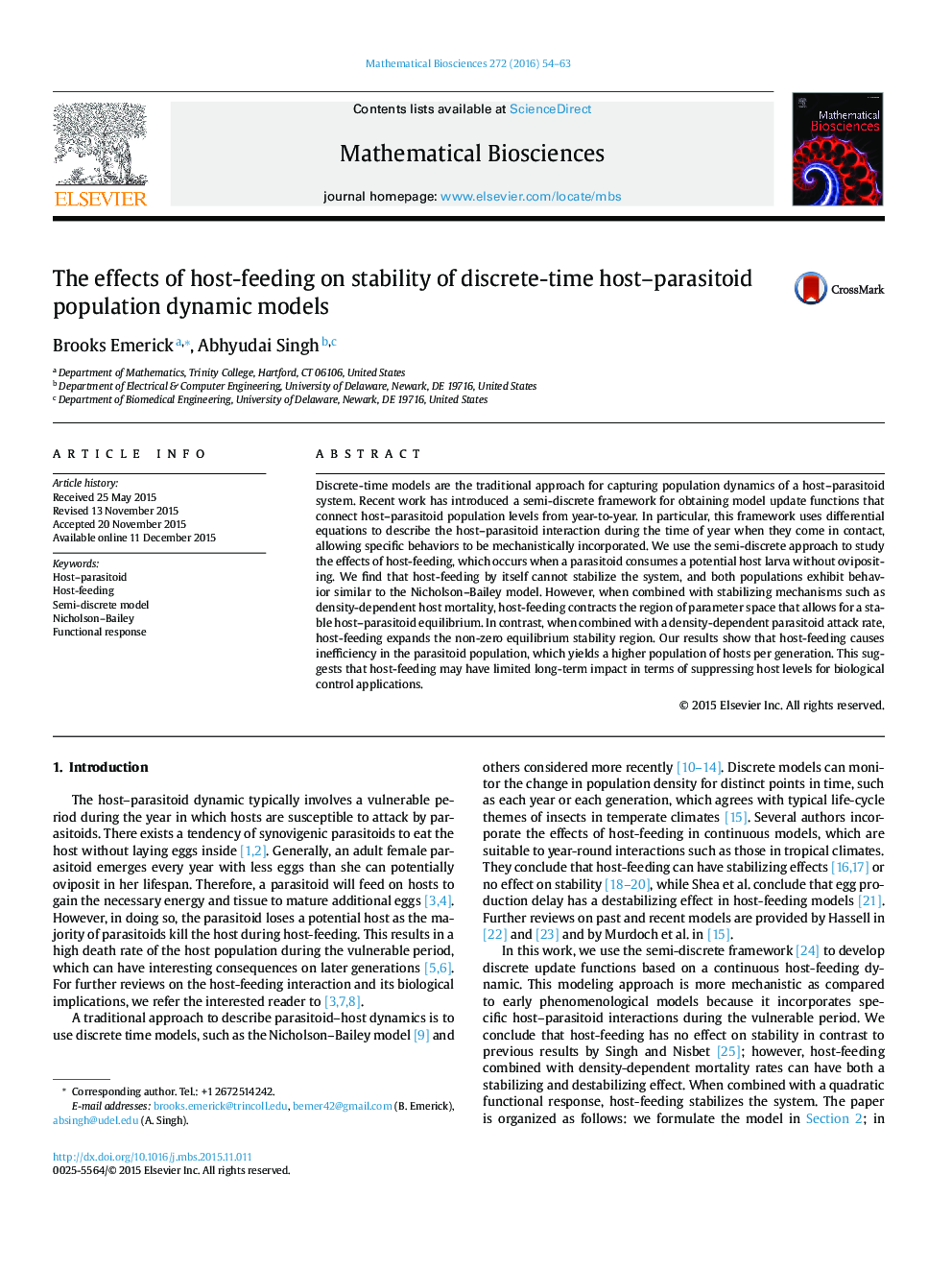| Article ID | Journal | Published Year | Pages | File Type |
|---|---|---|---|---|
| 4499909 | Mathematical Biosciences | 2016 | 10 Pages |
•We implement a simple host-feeding dynamic into the semi-discrete framework.•Host-feeding alone does not stabilize the Nicholson–Bailey model.•Host-feeding contracts the stability region when coupled with a density dependent mortality rate.•Host-feeding has a stabilizing effect when coupled with a quadratic functional attack rate.•Egg maturation delay destabilizes the host-feeding model.
Discrete-time models are the traditional approach for capturing population dynamics of a host–parasitoid system. Recent work has introduced a semi-discrete framework for obtaining model update functions that connect host–parasitoid population levels from year-to-year. In particular, this framework uses differential equations to describe the host–parasitoid interaction during the time of year when they come in contact, allowing specific behaviors to be mechanistically incorporated. We use the semi-discrete approach to study the effects of host-feeding, which occurs when a parasitoid consumes a potential host larva without ovipositing. We find that host-feeding by itself cannot stabilize the system, and both populations exhibit behavior similar to the Nicholson–Bailey model. However, when combined with stabilizing mechanisms such as density-dependent host mortality, host-feeding contracts the region of parameter space that allows for a stable host–parasitoid equilibrium. In contrast, when combined with a density-dependent parasitoid attack rate, host-feeding expands the non-zero equilibrium stability region. Our results show that host-feeding causes inefficiency in the parasitoid population, which yields a higher population of hosts per generation. This suggests that host-feeding may have limited long-term impact in terms of suppressing host levels for biological control applications.
